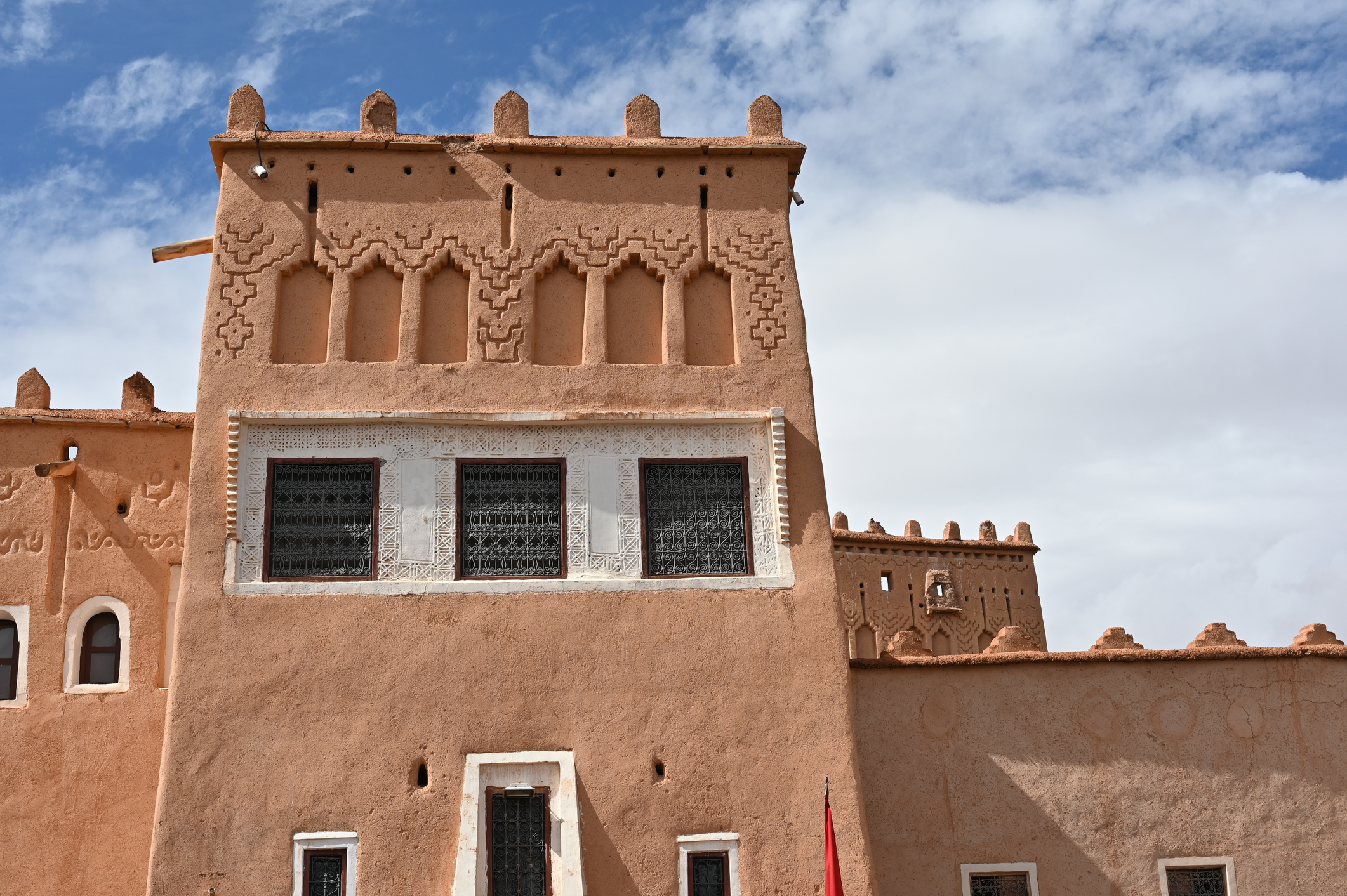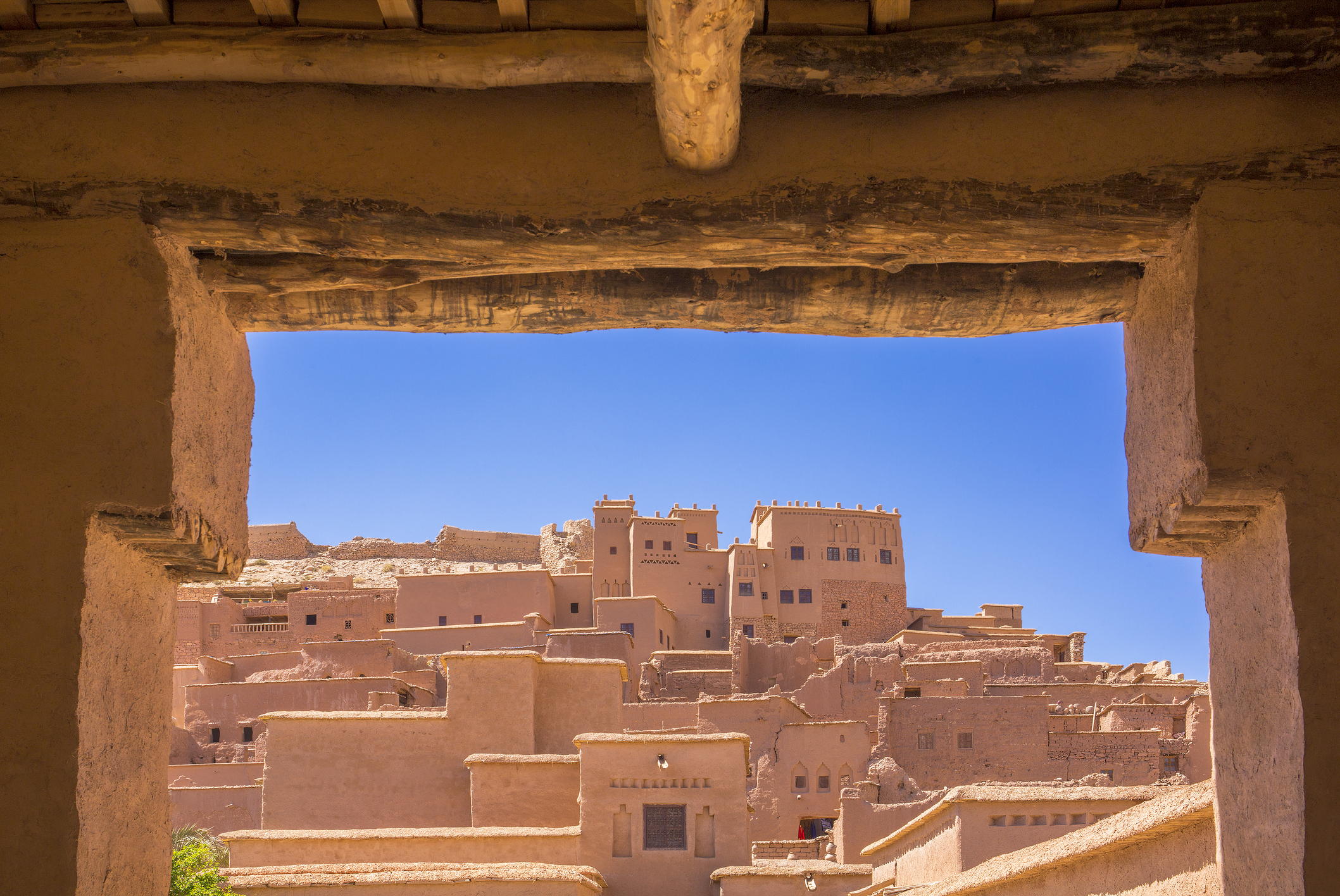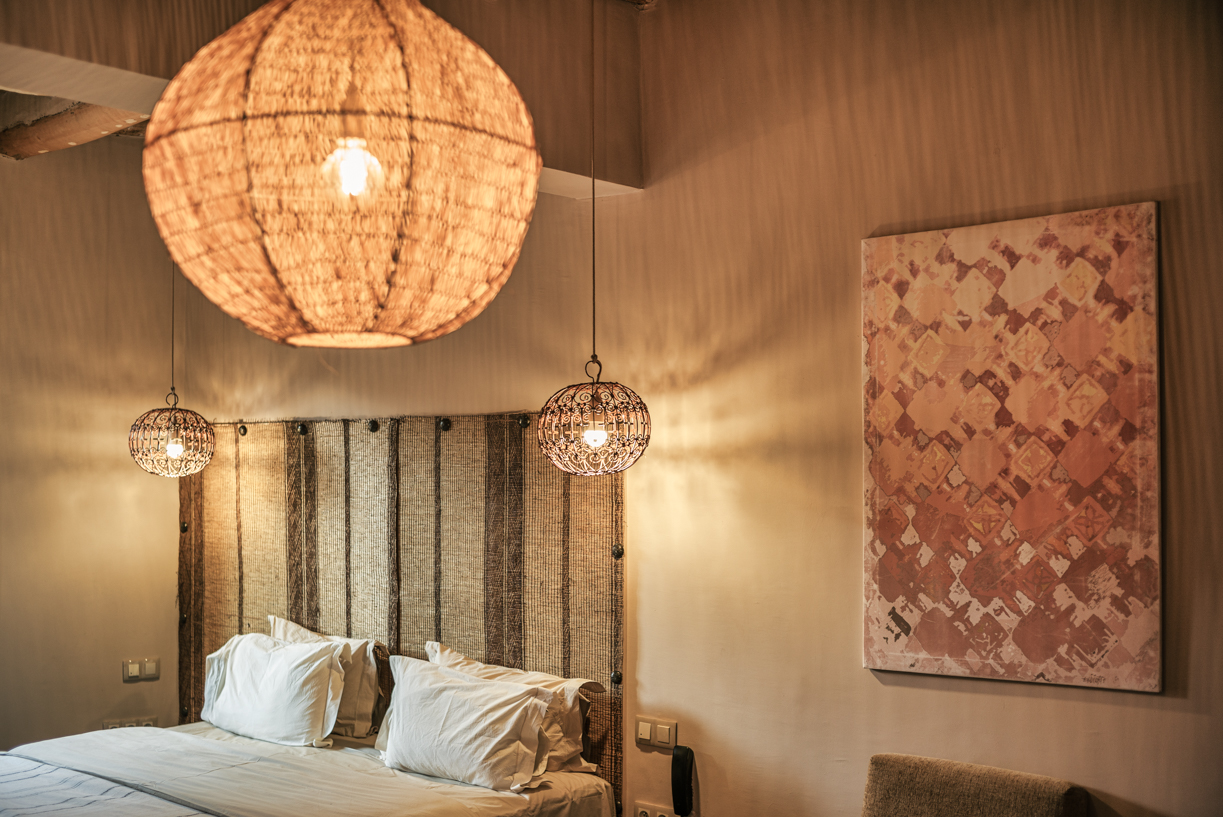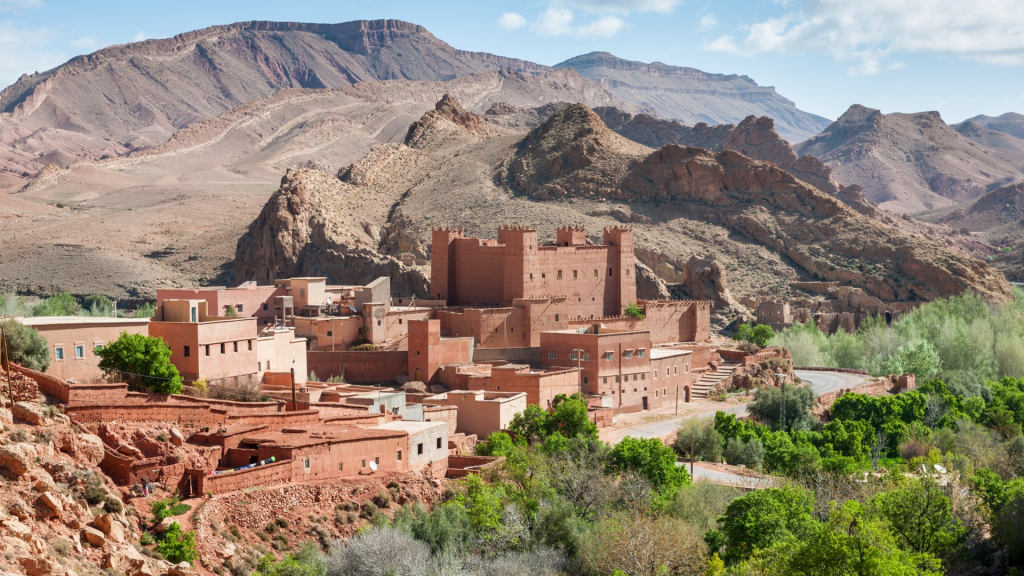Presentation
Situated at an altitude of 1,150 metres, at the confluence of the wadis Dades and Imini forming the DrâaIt is the main urban centre in the river valley.
The town lies on the southern foothills of the central High Atlas, dominated to the west by the Toubkal and to the north-east by the M'gounboth of which reach heights of over 4,000 metres.
It is at the crossroads of the routes linking it to the north-west with Marrakech through the passes of the High Atlas, whose Tizi n'Tichka (2,260 metres); to the east at Tafilaletto the south to the middle valley of Drâaand beyond to the Saharan desert; and finally to the west towards the valley of the Souss and the Atlantic coast, bypassing the Jebel massif Siroua.
The urban area of Grand-Ouarzazate extends to the south side of the wadi with the village of Tabount - sometimes referred to as "Ouarzazate-Sud" - which, along with the kasbah of Tifoultoutefrom the rural commune of Tarmigt.


Kasbah
Listed as a UNESCO World Heritage Site, the Kasbah of Taourirt bears witness to the splendour of Amazigh architecture.
According to oral tradition, the kasbah was built in the 17th century by the Imzwarn, a powerful local family. But what is more certain is that the kasbah was taken over and enlarged by the Glaoui family in the 19th century. At the height of its importance in the late 19th century, the kasbah controlled an important location at the confluence of several river valleys - including the Draa and the Dades- who were part of the Saharan trade routes. One of the members of the Glaoui family, Thami El Glaouiwas famous for being the pacha from Marrakech for the duration of the French colonial domination on Morocco in the 20th century.
After the end of French colonial rule and the end of the Glaoui's control over the region, the kasbah began to deteriorate. In 1954, it was added to the list of Moroccan national heritage. In 1956, the property came under Moroccan state control, although it was returned to the Glaoui family in the early 1960s.
In 1972, the Glaoui family sold the kasbah to the municipality of Ouarzazate.
The site was abandoned until the late 1980s, and features traditional Berber architecture with its complex design and well-preserved structures.
The kasbah features red earth walls and beautiful cedar wood ceilings, making it an important cultural landmark.







